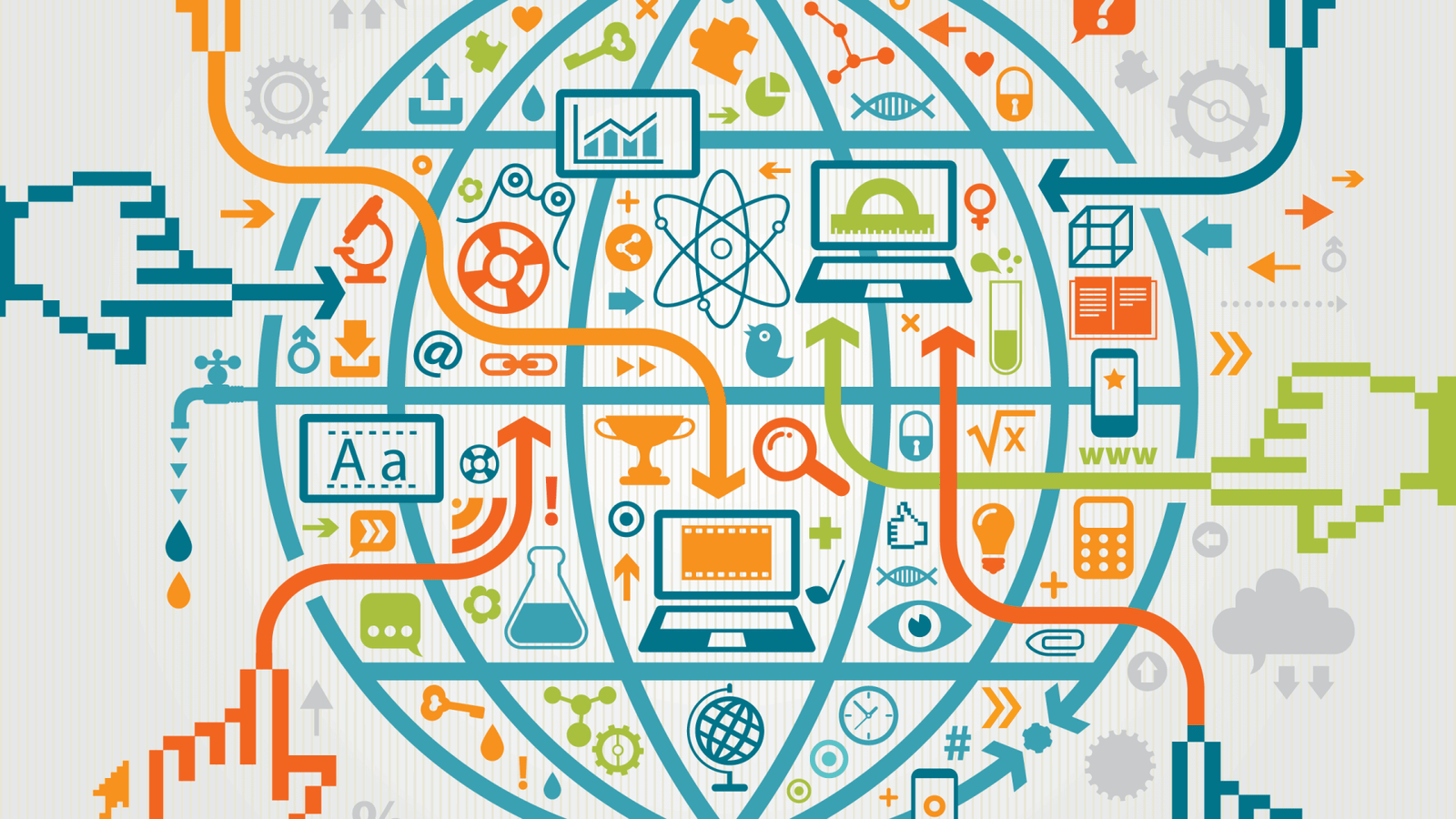EdTech and Digital Learning Technology has been the driving force behind a significant revolution in the educational landscape over the past few decades. Education technology, or EdTech, has expanded the possibilities for student learning, teacher effectiveness, and institutional management of educational processes. EdTech has gained considerable significance. This article examines the development of EdTech, the function of digital learning, its effects on education and potential future paths in the international education system.

The Evolution of Education Technology (EdTech)
EdTech is not a new phenomena, despite its remarkable rise in the digital era. The history of educational technology begins with the usage of antiquated resources like textbooks and chalkboards. But in the late 20th and early 21st centuries, major technical developments brought with them more advanced tools. Such as digital platforms, artificial intelligence (AI), learning management systems (LMS), and television sets in addition to projectors and television sets.
Early Developments
The introduction of personal computers into classrooms in the 1980s and 1990s signaled the beginning of a significant change in the way that technology. To improve the quality of instruction, schools started implementing desktop computers, projectors, and CD-ROMs. Self-paced learning was made possible by resources like Microsoft Encarta and interactive instructional software that ran on CD-ROMs. Despite their limited interactive capabilities and scope, these resources contributed the fundamental idea of technology-enhanced learning.
Digital Learning: Bridging the Gap in Global Education
The process of utilizing technology to support education is known as digital learning. It includes online education that uses internet-based tools and resources, such as virtual classrooms and e-learning. By closing gaps in access, equity, and quality—especially in rural or underprivileged areas—digital learning has revolutionized education.

E-Learning and MOOCs
Massive Open Online Courses, or MOOCs, transformed higher education by giving students access to top-notch courses from prestigious universities all over the world. Courses in a variety of topics, including computer science, business, and the humanities, are available on platforms like edX, Coursera. People of various ages and backgrounds can access education thanks to e-learning, which gives students the flexibility to finish courses.
Virtual Classrooms and Distance Learning
With the help of programs like Zoom, Google Meet, and Microsoft Teams, virtual classrooms are now a necessary part of contemporary education. These digital platforms provide instantaneous communication between educators and learners, imitating conventional classroom settings. Virtual classroom usage surged during the COVID-19 epidemic, highlighting the significance of digital tools for maintaining educational continuity.

The Impact of EdTech on Education
Numerous advantages have been brought about by EdTech in education, such as increased accessibility, increased participation, and the ability to provide individualized instruction. But there are drawbacks to technology integration in education as well, such as worries about data privacy, technological obstacles, and equality issues.
Enhancing Accessibility and Inclusivity
The potential of EdTech to improve educational accessibility is among its most important effects. For students in remote or underdeveloped locations who might not have access to traditional educational institutions, digital learning platforms have created new opportunities. Students with impairments can now participate more fully in the learning process because to assistive technologies like screen readers, audio books, and subtitles. Furthermore, online education can lower the price of physical infrastructure, lowering the cost of education.

Conclusion
The emergence of digital learning and EdTech has completely changed the face of education, providing never-before-seen opportunities for both teachers and students. EdTech is set to change education in the years to come because it has the ability to improve accessibility, customize learning, and engage students in fresh and creative ways. However, in order to guarantee that new technologies help all kids, regardless of their background or circumstances, issues like the digital divide, teacher preparation, and data privacy must be addressed. The future of education in the twenty-first century will surely be influenced by the advancement of technology and how it is incorporated into the educational process.
FAQs
What is EdTech?
The term “education technology,” or “EdTech,” describes the application of technological tools, platforms, and systems to enhance instruction. It consists of digital materials like online courses and interactive tools, software like learning management systems (LMS), and hardware like tablets and laptops.
What is digital learning?
Digital learning is the process of facilitating education through the use of digital technologies and resources like the internet, mobile devices, and e-learning platforms. This covers mobile learning apps, interactive simulations, virtual classrooms, and online courses.
How is EdTech different from traditional education?
Through the use of technology, EdTech improves access, engagement, and personalization in traditional education. EdTech facilitates adaptive learning, remote collaboration, online learning, and a variety of multimedia materials that meet the needs of many learning styles, in contrast to traditional classroom settings.
What are the benefits of using EdTech in the classroom?
Among the advantages of EdTech are:
enhanced accessibility for learners residing in isolated or neglected regions.
Individualized instruction based on the requirements of each student.
enhanced involvement with the use of multimedia and interactive tools.
improved cooperation through the use of digital resources and online platforms.
cost savings through the removal of the requirement for tangible materials.
What is a Learning Management System (LMS)?
An online learning management system, or LMS, is a software platform that assists educators in managing the learning process. It makes it possible to produce, distribute, and monitor instructional materials. Moodle, Canvas, and Google Classroom are a few examples.



